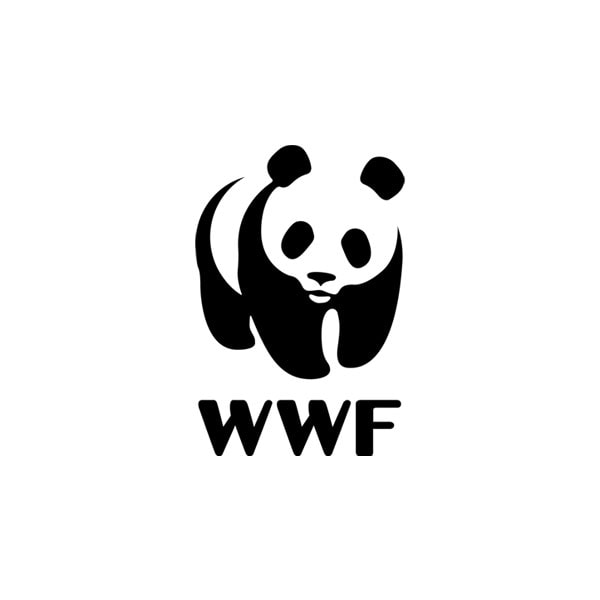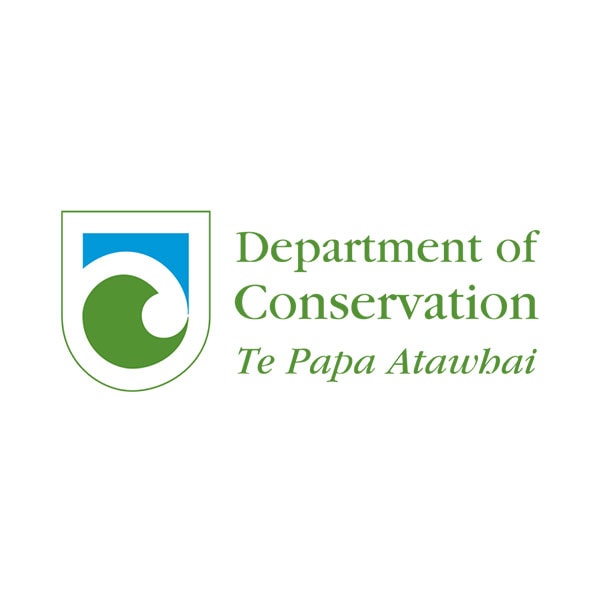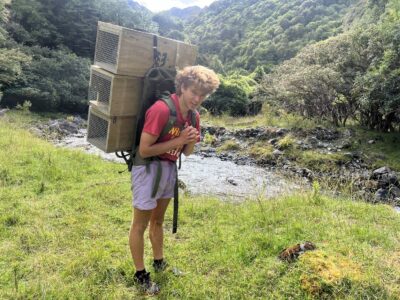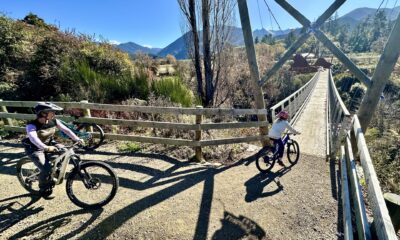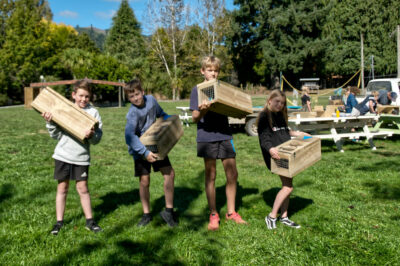Flood
Residents living close to the Motueka River and its tributaries awoke on the morning of the 17th July to flooding that rivalled anything witnessed for over 30 years. The persistent rains from a moist northerly airflow combined with snowmelt on the Wharepapa Range to swell the Motueka River from it’s normal flow of around 50 cubic metres per second (cumecs) to a peak of over 1,750 cumecs.
A hapless camper was rescued by helicopter from the roof of his motorhome, having unwittingly parked on the river’s edge for the night. Inundated paddocks caused stock losses and debris-thatched fences to topple. Blocked roads made life inconvenient with treefalls and slips, while floodwaters turned orchards into brown lakes. Muddy waters lapped the foundations of several properties.
And a Farmers for Whio trap was transported on a remarkable journey.

Farmers for Whio
Whio – immortalised on the back of our $10 note – have weathered many-a-storm. Early diaries of Motueka River explorers’ mention blue duck’s curious interactions with their canoes. Their shrill ‘whiiiiioooo’ resonated from the river-edge totara forests and their bank-side breeding grounds were concealed and secure.
Whio live and breed in fast flowing rivers of vitality. They are key indicator species of a river’s health. But their populations have undergone catastrophic decline at the sharp end of stoat predation. With the arrival of predatory mustelids, habitat clearance and declining water quality, whio have been forced to migrate further up the watersheds, occupying niches in the higher-altitude Kahurangi forests.
Extensive trapping networks initiated by Friends of Flora have aided their survival by creating safe havens. Their numbers are now reaching territorial capacities in the upper watersheds, so populations are spilling out towards the main river stem.
And this is where Farmers for Whio comes in. Given the need for a greater area of safe habitat, the local community is forming a trap network (to eventually cover 65km) in the central catchment between the Graham and Baton Valleys. The project has secured funding grants from World Wildlife Fund and Doc and has appointed a trapping officer, Barry Burger.
Barry says there are now 416 traps logged on https://www.trap.nz/. Most are located between the Pearse and the Graham, with over 40km of river edge now trapped – extending all the way to Ngatimoti. “There has been great interest from landowners and volunteers and we know from our surveys that whio numbers are on the increase”, says Barry. “I swim with my kids near Peninsula Bridge and pairs have been spotted there and by the Pearce too.”
When setting up the trap network, Barry thought the top of the stop bank would be a safe bet. But when the Motueka River overtopped the stop bank just below the Pearse, several traps were disturbed. Some were gently picked up by the river and floated over the top of a fence to be deposited around 80m downstream. “They were all chock-a-block with sticks and silts, but many had not even gone off.”
And it was one of these traps which started on an adventure.
To the sea
When the flood waters receded, Motueka township residents took to their daily walks along the sandspit and Jackett Island. Some people reported Farmers for Whio traps resting above the high tide mark, over 30km from their home location. Curious to recover some of the lost booty, volunteer trapper Paul Cossey went for a looksee.
“I’d been watching the videos on social media”, said Paul, “and realised some traps might be from the West Bank line between the Pearse and Graham, which forms part of my beat. So when I saw a photo of a trap found on Jackett Island and identified it as ‘mine’, the next day I went for a walk. By the time I got to the end of the [Motueka] spit, I had found another – a needle in a haystack. I had a look, opened it up, and it still had a rat in it – and quite well preserved actually!”
The trap is now back in it’s place on the stopbank, secured with a waratah, awaiting it’s next predator. The Whio are present too, thankful the flood didn’t occur during their springtime nesting.

Image Credit: David Easton
Farmers for Whio is generously supported by the World Wildlife Fund and the DoC Community Fund
